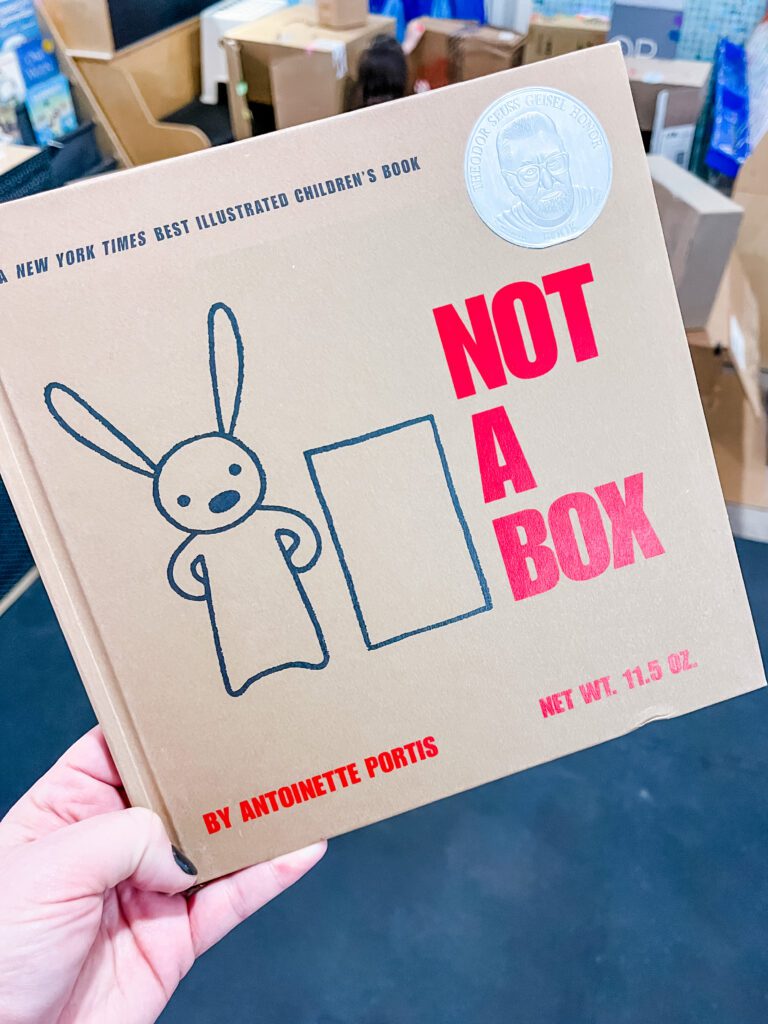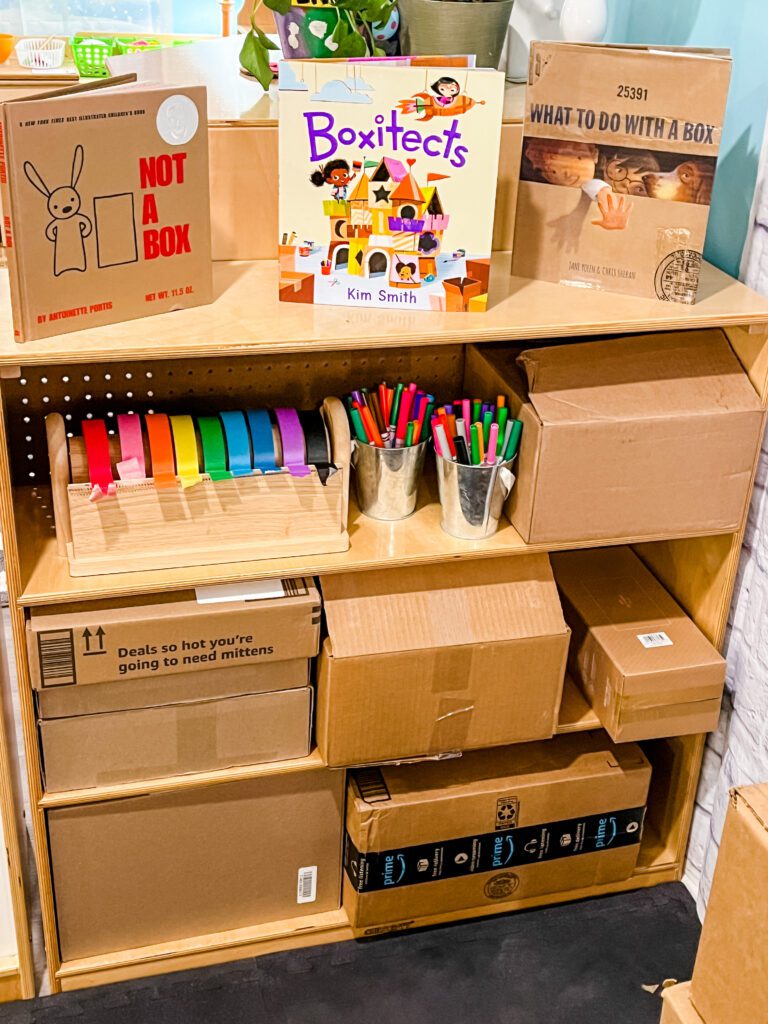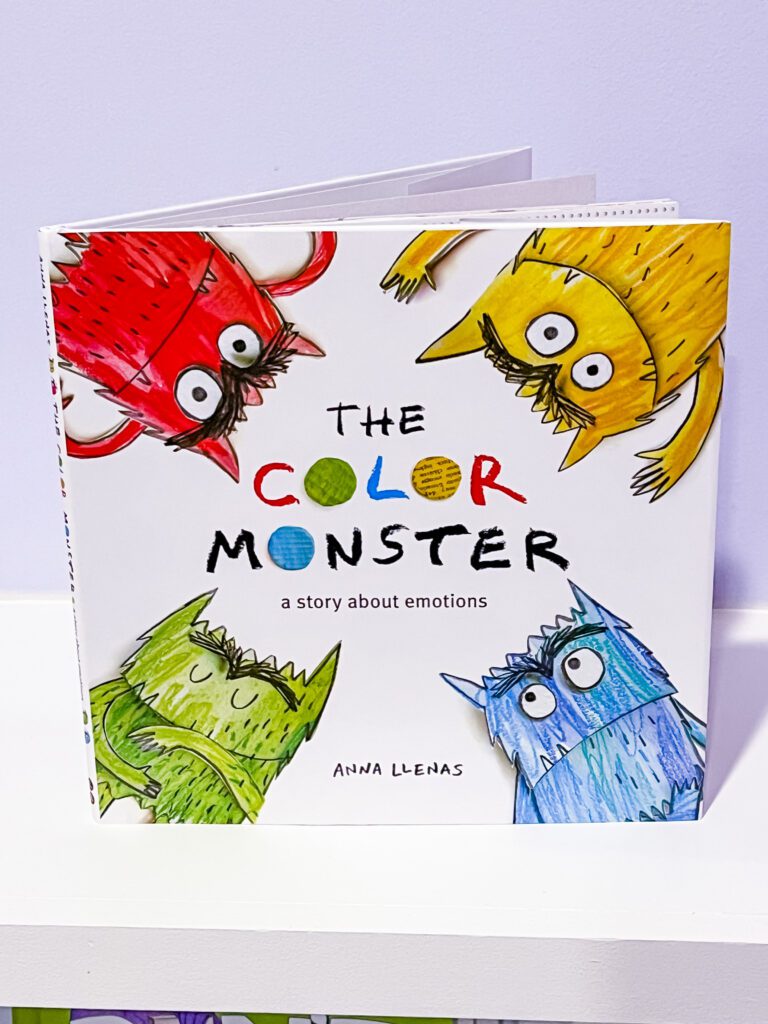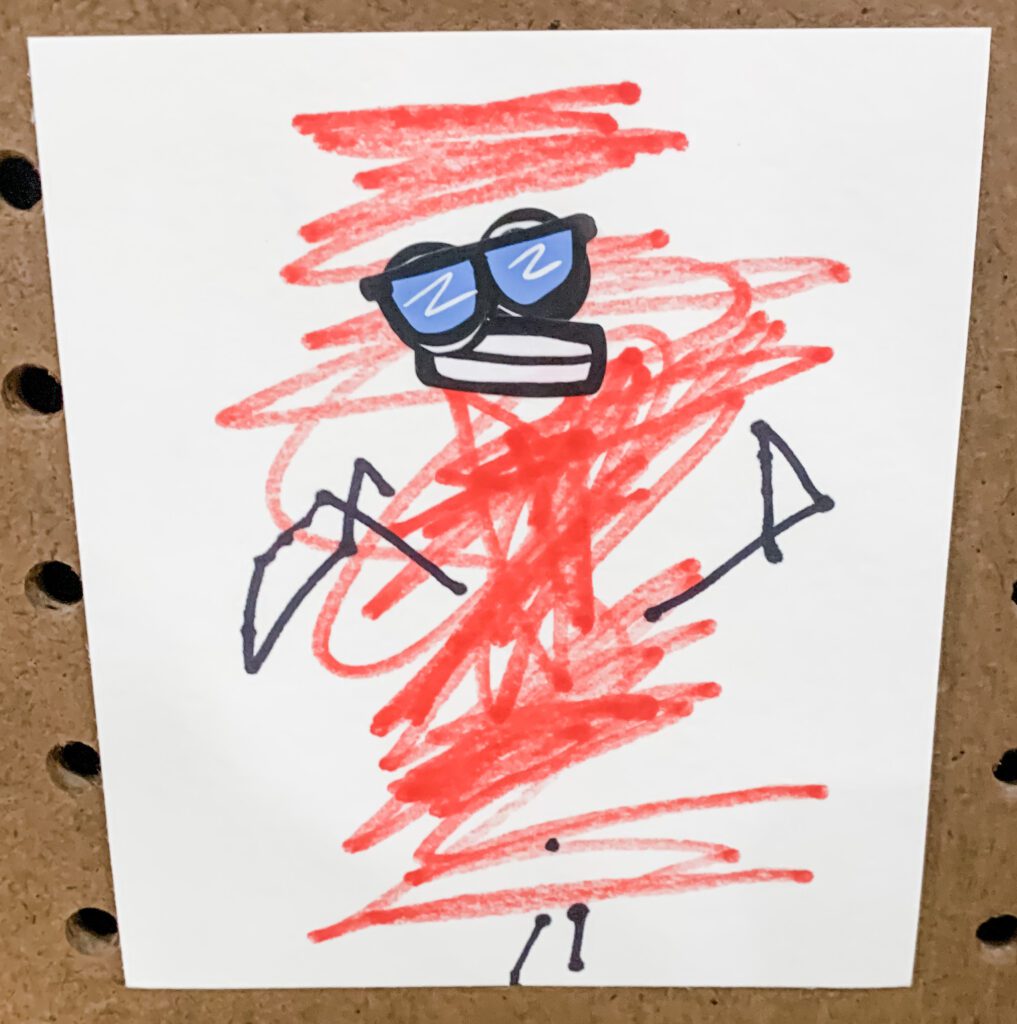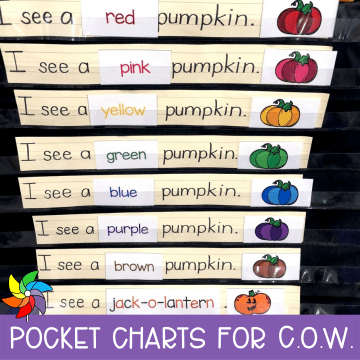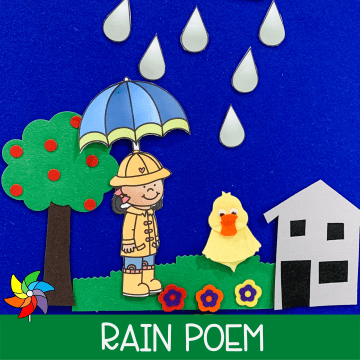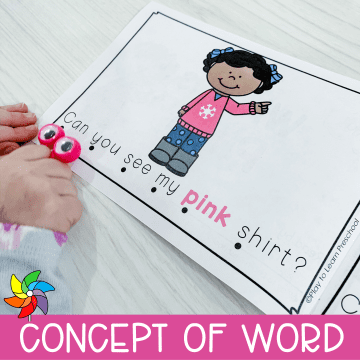Reading comprehension – understanding and interpreting what is read – is one of the most important skills for students of all ages. Even when preschoolers cannot yet read, they love to be read TO. A wise teacher uses before, during, and after reading a story as teaching time. Here are nine strategies for developing budding reading comprehension skills in even the youngest learners.
Before Reading
The goals of using a comprehension strategy with students before reading a story are to help them focus their attention, to activate their prior knowledge, and get them excited to read it! It is tough for students to transition to storytime, sit down, and just start reading. Teachers must “prep” them a little bit to be good listeners. There are lots of ways to accomplish this. Here are 3 strategies that work well:
Purposes of Before Reading strategies
- Activate student’s prior knowledge
- Set the stage for reading
- Get the children excited about the book!
Reading Comprehension Strategy #1 – Have a Book Talk
Book Talk Ideas
- Give the children a “teaser” about what is to come
- Introduce the characters and explain the problem
- Invite the children to make a prediction
Knuffle Bunny by Mo Willems is a perfect story for engaging students during a book talk. Young children find the main character, Trixie, very relatable and can empathize with the angst that she feels when her beloved stuffed toy is misplaced. The teacher can draw students in further by bringing a favorite stuffed toy or classroom mascot to the carpet, or even bring one of their own toys from their childhood. Discuss how the toy goes everywhere, it sleeps in the bed with the owner and is very important to that person. Then, ask the students if anyone has a special stuffed animal or blanket. Ask the students to imagine, “How would you feel if your special toy got lost?” After sharing their ideas, read about what happens to Trixie. (And for students that have lost their special items, try LostMyLovey.com to search for replacements or even the item itself!)
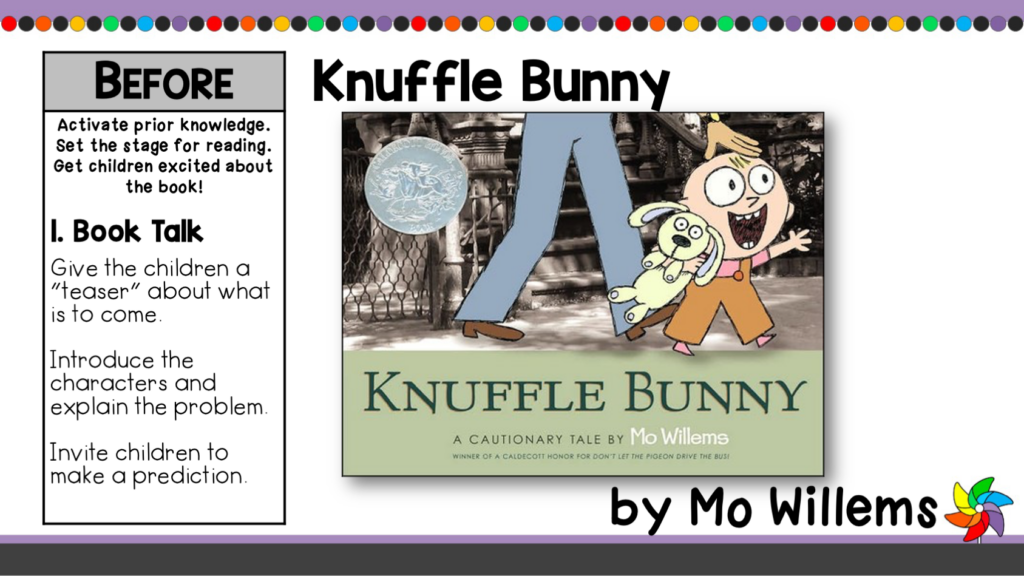
Reading Comprehension Strategy #2 – Book in a Bag
Book in a Bag Ideas
- Put together a few small props or pictures that represent the story
- Pull them out one at a time and invite the children to make a prediction about the story
Preschoolers (and many older students!) are visual learners. When the teacher sits down to read a story with a mysterious bag full of objects, it is guaranteed to grab their attention! Fill a gift bag with items and pictures from the story and pull them out one at a time. As each item is revealed, encourage the students to make a prediction about the story. What is it going to be about?
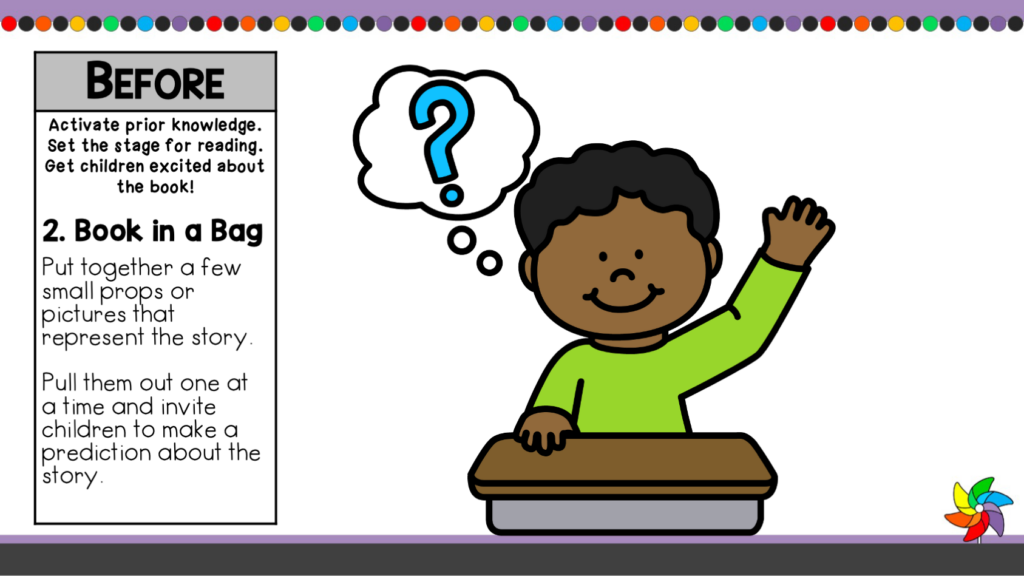
Reading Comprehension Strategy #3 – Key Word
Key Word Ideas
- Choose 1 important word from the story
- Discuss the meaning of the word
- Have students give examples of the word
- Encourage children to make predictions
Introducing a “Key Word” is another way to get students thinking about the story before reading it. For example, in The Scarecrow’s Hat by Ken Brown, ask students if anyone knows what swap means. Discuss how “swap” means to trade. Next, invite them to talk about things they like to swap. Then, tell them that in The Scarecrow’s Hat, Chicken wants to swap something with Scarecrow. Encourage students to make predictions about what they might swap. Finally, read the story together.
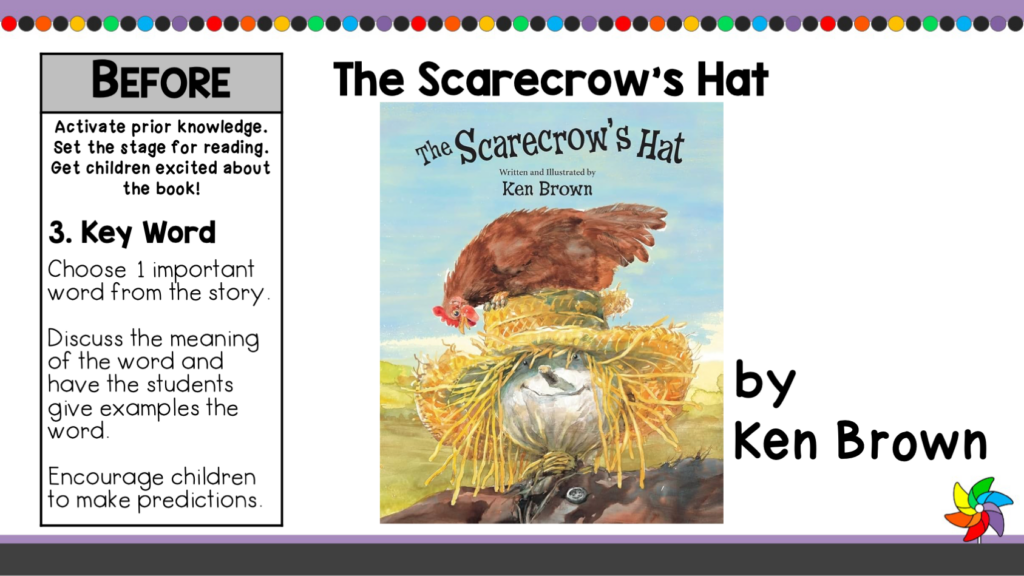
During Reading
There are three strategies that teachers can use during reading. While reading aloud to children, the most important thing is the enjoyment of the book, of course. Young children benefit from being active listeners. They need to listen with their voices and their bodies in order to comprehend! Teachers can involve them by doing the following:
Reading Comprehension Strategy #4 – Incorporate Movement
Incorporating Movement Ideas
- Have students use props from the story
- Have students use their bodies to mimic motions in the story
- Use simple musical instruments, such as shaker eggs, at key phrases
Preschoolers are not build to sit still! Involve them in reading the book by having them stand up and do the actions on each page. I Got the Rhythm by Connie Schofield-Morrison, From Head to Toe by Eric Carle, and Spunky Little Monkey by Bill Martin, Jr. are all great movement books.
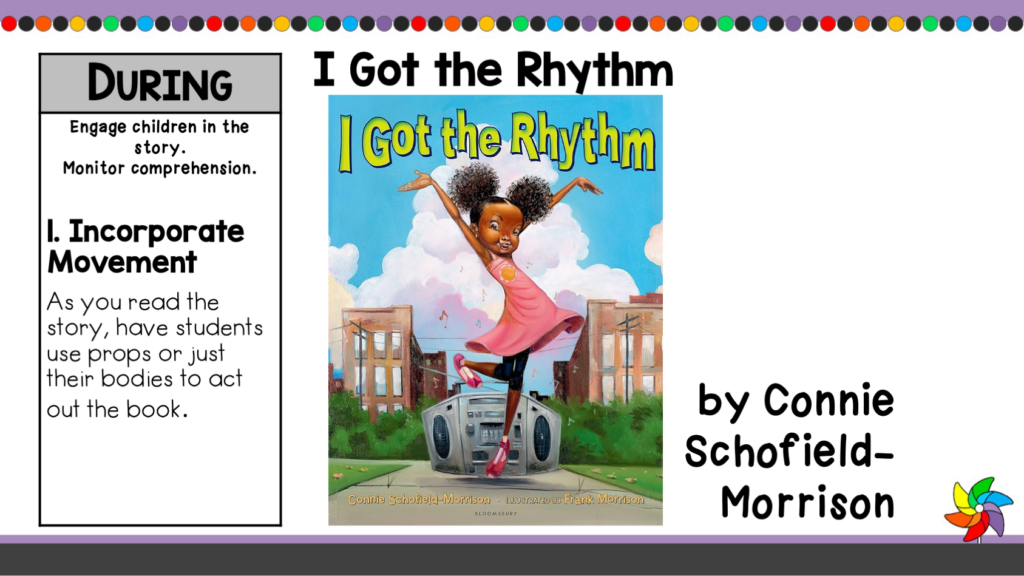
Another example:
The Little Old Lady Who Was Not Afraid of Anything is an all-around fantastic book for fall. It is a good example of how to incorporate movement while reading a book to young children. The Little Old Lady in the story meets 2 big shoes on the path to her cottage, and the shoes go, “Clomp! Clomp!” It is so much fun for the children to “clomp” their own shoes. They also love it when they are provided props to go with the story– shoes, pants, a shirt, gloves, a hat, and a pumpkin head. As the teacher reads, they take turns moving the props to match the story. So much fun and the students are completely engaged!
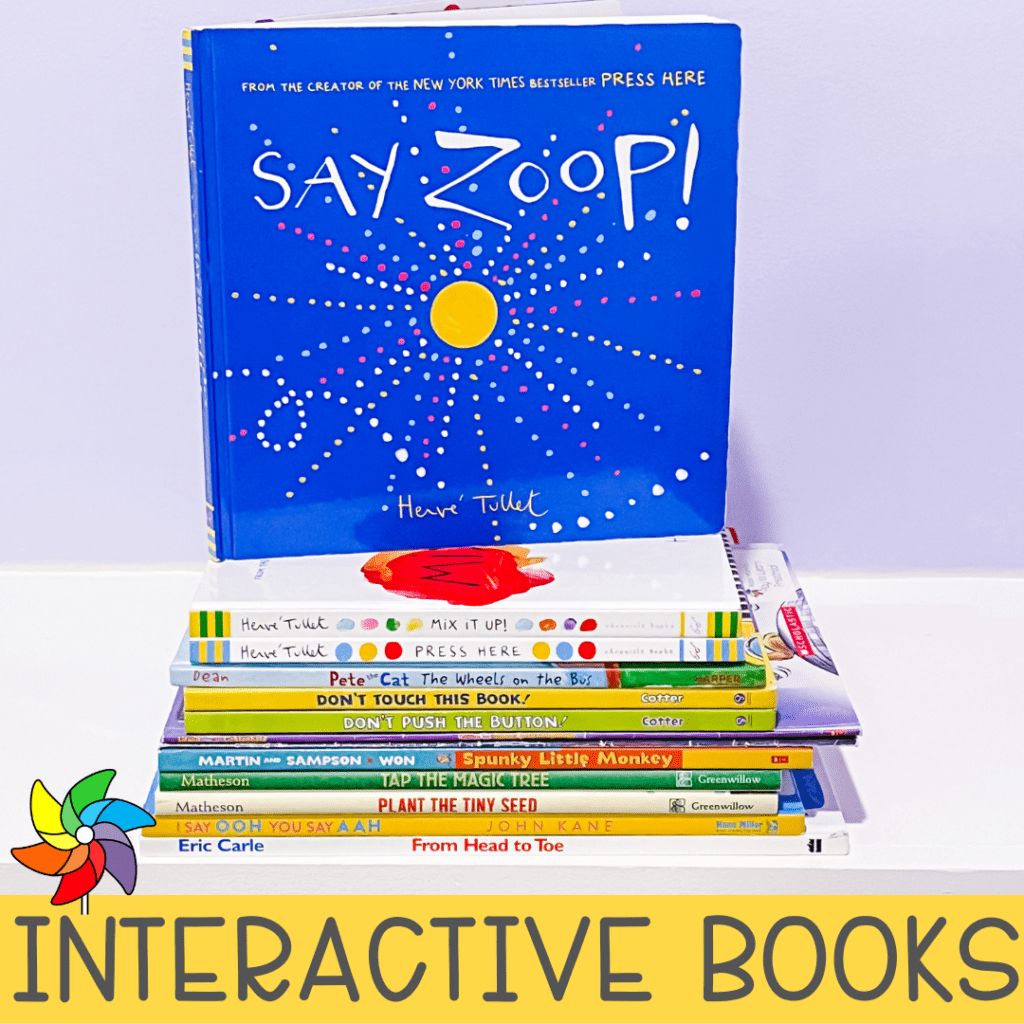
Interactive Books for Preschoolers
These stories are the perfect way to involve children in the story. Each page encourages them to touch, clap, jump, move, or make noise. Preschoolers find them irresistible!
Reading Comprehension Strategy #5 – Repeated Refrain
The reading jargon for repeating a refrain or line in a book is “Choral Reading.” It’s a term that means the children all read the repeated lines in unison. For example, while reading “Silly Sally” by Audrey Wood, everyone can join in saying, “Silly Sally went to town, walking backwards, upside down!”
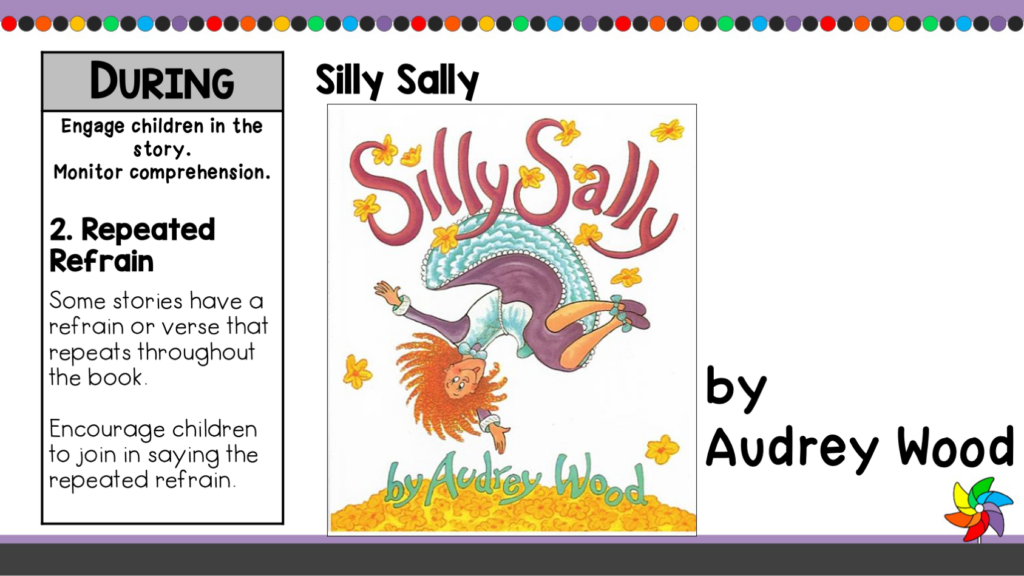
The Pete the Cat books are another perfect examples of this strategy. In Pete the Cat I Love My White Shoes, the repeated line is, “I love my white shoes. I love my white shoes! I love my white shoes, etc.” It’s so catchy that the students will have a hard time not joining in!
Just a quick note: Be sure that you get the free audio downloads to go along with your Pete the Cat books. They’re just not the same without the audio!
Reading Comprehension Strategy #6 – Sequencing
Sequencing Ideas
- Use pictures of story events
- Have students place pictures in a pocket chart as they happen
A final “During Reading” strategy perfect for preschoolers is Sequencing. Thinking ahead to elementary school, we know that students will have to retell stories with a beginning, middle, and end. They will have to recount events of a book in order. Preschool teachers can prepare them for this essential elementary skill by giving students practice putting events in order. One way to do this is to print pictures from the story and give them to students before reading. They can then place the pictures on a felt board, pocket chart, or easel in order as the story progresses.
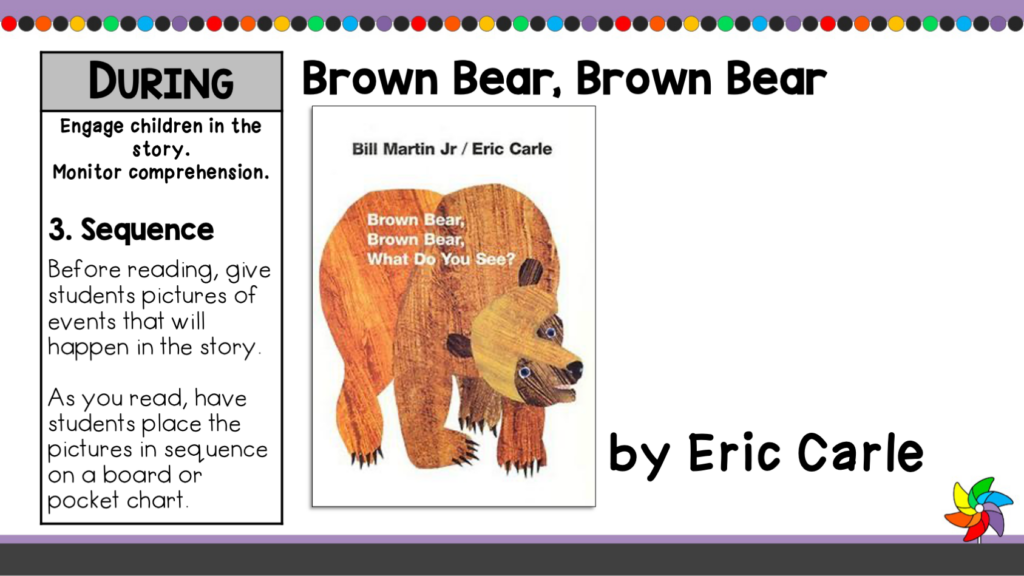
Felt Board Retelling
Use the felt board to BOOST reading comprehension with your preschoolers:
⭐️At the beginning of the week, I read a book and use felt pieces to help illustrate it as we go along.
⭐️Then, during centers the rest of the week, the students love to use the book and the pieces to retell the story on the felt board.
The pieces shown in the photo are by Rally Felt Co. We love their monthly subscription box, and the students LOVE retelling each of the stories on the board.
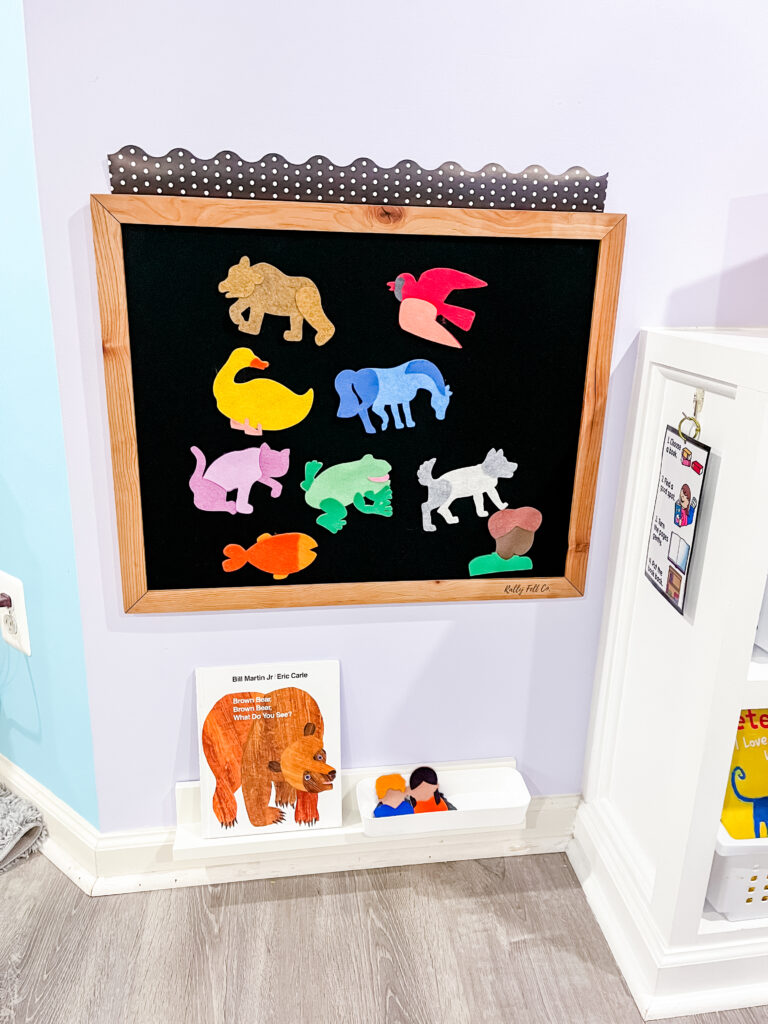
After Reading
We know that in order for children to understand a story well, they have to start thinking about it before reading. They might look at the pictures and make a prediction. Then, while we read, we can involve the children by encouraging them to move and read with us. Now that the book is finished, there are other things we can do to reinforce the story and extend the students’ understanding.
After Reading Comprehension Goals
- Reflect on the story
- Make Connections
- Revisit the story
Reading Comprehension Strategy #7 – Make Connections
Another important elementary school comprehension skill is “Making Connections.” Students can make a connection in one of three ways:
- TEXT to SELF – Does this book remind you of something that happened to you?
- TEXT to TEXT – Does this book remind you of another book?
- TEXT to WORLD – Does this book remind you of something you know about in the world (another place, a movie, a person you know, etc.)?
When reading a story to young children, teachers can encourage them to compare the story to something else that they know about. After reading Corduroy, students might tell about their favorite stuffed animal. They can compare Lisa’s love of Corduroy to their own (Text to Self). It also might remind them about the Knuffle Bunny story mentioned earlier (Text to Text). They might even remember that Corduroy was purchased in a department store, much like one they saw in an ad on TV (Text to World).

Reading Comprehension Strategy #8 – Read and Retell
Lots of stories lend themselves to “Acting it Out.” After reading We’re Going on a Bear Hunt by Michael Rosen, students can retell the story by:
- Doing Cosmic Yoga
- Acting out each scene with a sensory bin.
- Using an interactive Going on a Bear Hunt Bulletin Board
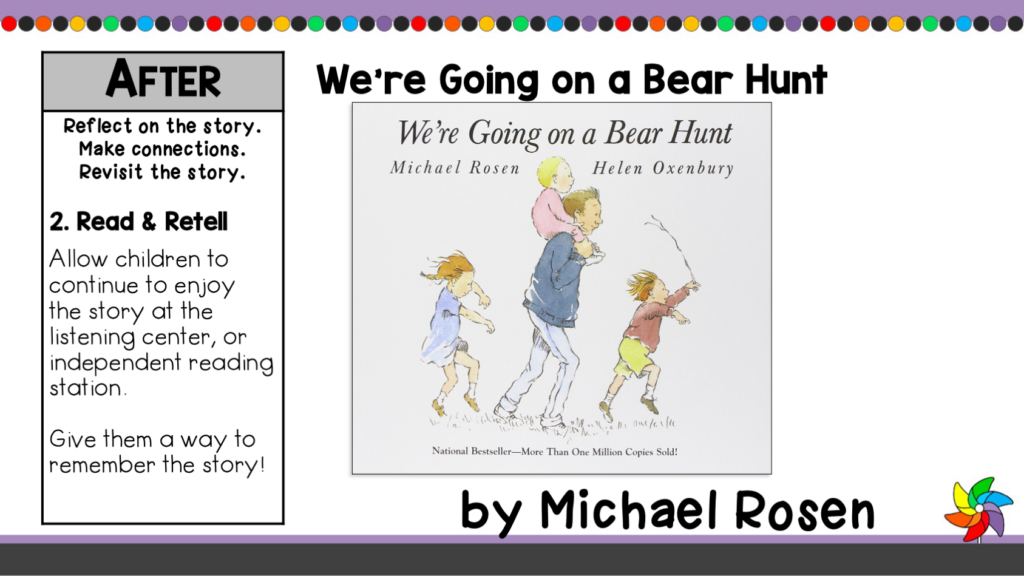
Reading Comprehension Strategy #9 – Art Extensions
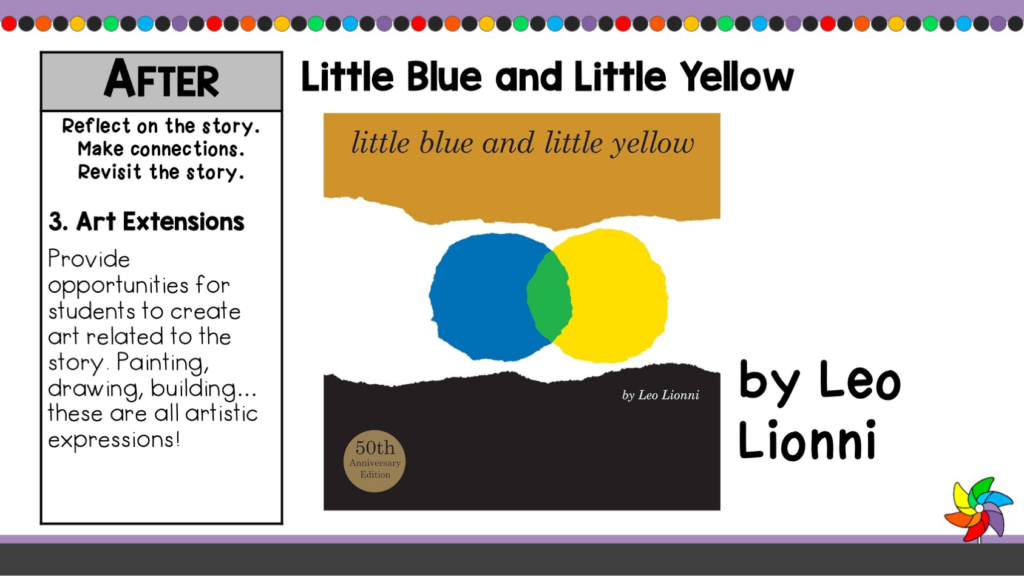
Set up an art activity where students can create a painting, a drawing, or even a structure to represent part of the story that you just read. Here are a few more fun ideas:
Read “Little Blue and Little Yellow” or “Blue vs. Yellow”
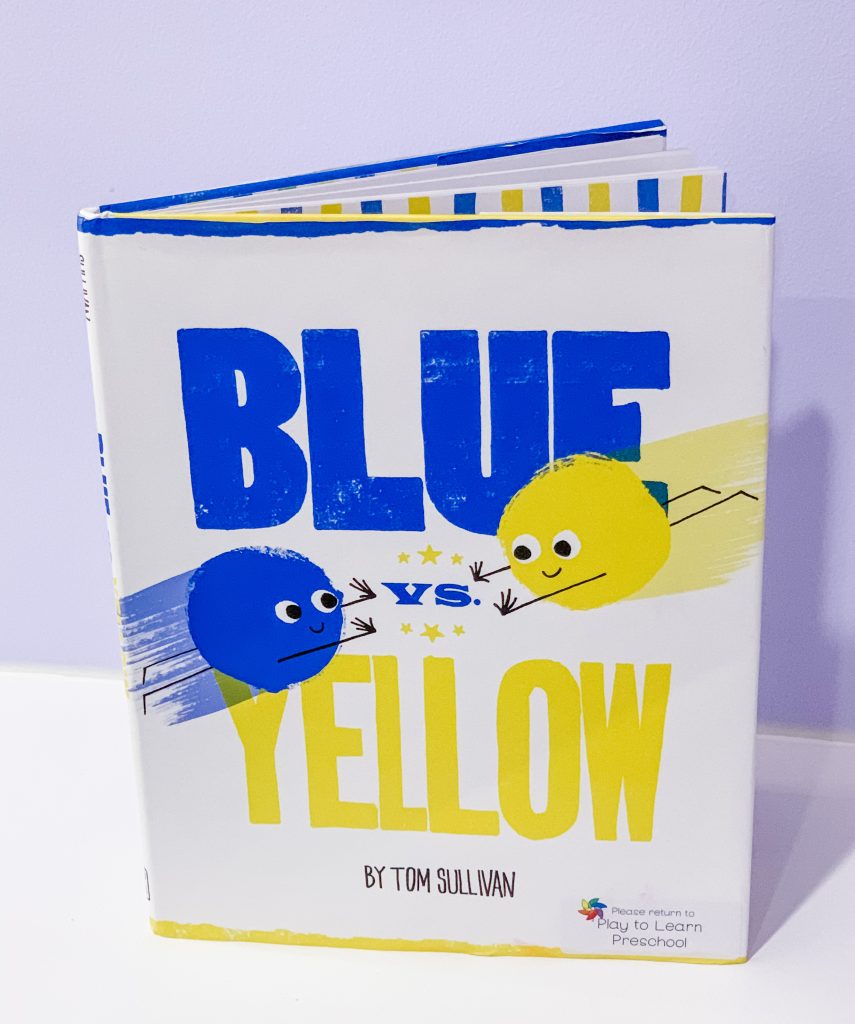
Then, try mixing blue and yellow play dough, blue and yellow paint, or blue and yellow water!
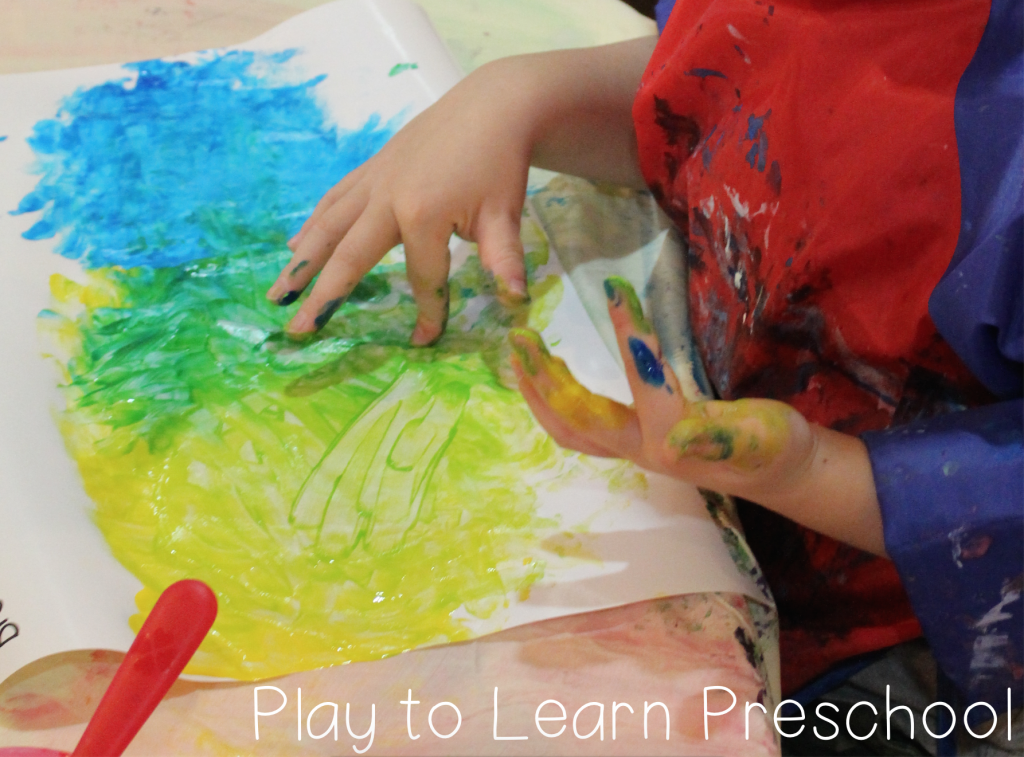
The most important thing for the students is that they gain a love of reading first. These skills take it to the next level, providing more enjoyment and understanding, valuable skills for when they move to grade school and beyond.
An Important Note:
While using reading strategies with children, it is important to keep their attention spans in mind. It is crucial to remember these strategies should not all be employed on the same day, or even on the same story. Never use more than one strategy from each section with each book, and try to make it quick! The goal is to get students thinking about the book, but most of the time and effort should be the act of reading and enjoying the story.
“Any book that helps a child to form a habit of reading, to make reading one of his deep and continuing needs, is good for him.”
– Maya Angelou
Looking for more information?
NAEYC has loads of articles about reading with young children right here.
For more early reading posts, check out the literacy tab on our website!
Need some printable literacy materials for the classroom? Find them here!
